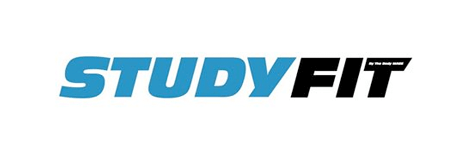I (Owen) have been powerlifting now for over 10 years from divisional to international and have made my fair number of mistakes during my powerlifting career. This article includes everything you can expect from your first powerlifting competition and more.
One month away – This is where you want to start practising being what we call “comp specific”. In a powerlifting competition there are certain criteria that you need to meet on each lift. If you do nothing else to prepare, learn these rules:

- Squat
- Walk out the rack and stand up with knees locked and chest upright
- Wait for the “squat” command
- Squat so your hip joint goes below your knee joint
- Fully stand up with locked knees until you get the “rack” command from the referee
- Failure to stand up, or if the bar descends after coming up from the movement results in a failed lift.

- Bench
- Unrack the bar and hold with locked elbows, bum on the bench and feet flat on the ground
- Wait for the “start” command
- Bring the bar to the chest and pause until the bar is motionless and the referee says “press”
- Lock your arms fully and hold until the referee says “rack”
- Failure to lock out, the bum or feet rising up of the bench or floor respectively or the bar descending after the movement up results in a failed lift

- Deadlifts
- Pick the bar up whenever you are ready
- Stand up locked out until the referee commands “down”
- Failure to lock out, hitching or ramming the bar up your legs or the bar descending during the movement will result in a failed lift.
It is important that you learn the commands and what is expected of you on the day. There is nothing worse than failing a lift because you didn’t listen to the commands or were not switched on to what is expected of you.
It is also important to note that bars and plates used in competition may be slightly different to those used at your gym. If you train in a commercial gym or use bumper plates and weightlifting bars they will feel a lot different to a powerlifting bar in competition. A powerlifting bar tends to have a harsher knurling and less flex than a weightlifting bar. If possible, try and do one or sessions with a powerlifting bar to get used to the feeling.
The evening before – When you are 24 hours out you want to make sure you right on track in every way you can. Try and be consistent with your food intake, exercise and any stressors you might encounter. Make sure you pack your bag the night before so you have everything you need for competition day. Nutrition wise a meal high in carbohydrates, medium protein and low fat is your best bet the evening before. However try not to eat anything that is going to bloat you or cause discomfort, so nothing out of the ordinary. Obviously this might change if you are trying to make a weight class, but my advice is not to cut too much weight leading into your first competition. The stress of this will take away some of the enjoyment trust me.
Kit bag essentials:
Your singlet
Kneesleeves – if you wear them
Wrist Wraps – if you wear them
Footwear – what you wear during your training
T-shirt – Cotton, non-slip
Long socks – for deadlifts
Chalk – for your hands on all 3
Talc – for your legs on deadlifts
Deep heat or ibuprofen gel – just incase!
Foam roller, resistance bands or massage ball – for mobilising and warming up
Toilet paper – Trust me you don’t want to be caught short!
Pen or pencil – For writing down your attempts
The morning of – you will have a weigh in time that spans over 90 minutes. You have to turn up and weigh in within this time. Not making weight or not turning up within this time will either mean you can not lift, or you will have to lift as a guest (not be able to place). My thought on the matter is if you turn up at the start of your weigh in time and weigh in early you will have more time to refuel and eat post weigh in. Lifting starts 30 minutes after weigh in closes therefore if you turn up late; it’s a quick turn around till lift off.
At weigh in you will be asked your opening lift for each of the main 3. Your opening lift is something you can do on a bad day, feeling sick and not feeling it. DO NOT go for a personal best on your opener. Usually around the 90% mark of your 1RM is a good idea. If you want more info on how to pick, your numbers sensibly read our blog on “Warming up for your 1RM”
After weigh in it’s a good idea to familiarise yourself with the venue. Find out the little things like where the toilets are etc., but also walk onto the platform and familiarise yourself where the judges will be, where the audience will be and where you are going to be looking. The more you can be at ease with the better your performance will be.
Lift off time – lifting on the day may take a few different formats, depending on how many lifters have entered. But usually there are 2 or more flights per session.A flight has a max capacity of 14 lifters and depending on the demographic of the competition lifters will be split into separate flights, sometimes at random, sometimes with some sort of through process. See below for an example:
| Order of the day | ||
| Weigh in 1
8am till 9:30am Lift off 10am |
Flight 1 – All Women
|
Flight 2 – Men up to 74kg |
| Weigh in 2
11am till 12:30am Lift off no earlier than 1pm |
Flight 3 – Men 83kg & 93kg | Flight 4 – Men 105kg Plus |
Above means that the day is split into a morning and afternoon session, which means the morning session will have lifters from flight 1 & 2, where the afternoon session will have lifters from flight 3 & 4.
This means the running order is as follows:
- Flight 1 will do all 3 squats then flight 2 will squat straight after, there will be no break between flights 1 and 2, therefore flight 2 will need to be warming up while flight 1 are lifting
- There will be a short break while the spotters and loaders change the platform to bench and then flight 1 will start benching. Once flight one has benched flight 2 will start benching
- There will be a short break while the platform is set for deadlifts then flight 1 will start deadlifting. Flight 2 will follow
- Once flight 2 has finished. There will be a break before the afternoon session begins.
- The same structure will be followed but with flights 3 and 4.
There isn’t always an afternoon session and sometimes there will be 3 or even more flights run back to back with each other. The structure doesn’t matter too much as long as you know what the structure is, and you can plan your warm ups accordingly.
Once a flight has started each lifter will complete their opening lift and this goes in ascending order. Therefore the person with the lightest opener will go first and the heaviest will go last. Then we go back to the lightest second lift and they will complete their lift, and so on until all 3 lifters have done all 3 of their lifts. Once completing your opener you have 60 seconds to get your second lift attempt into the admin desk. Be quick with this as if you don’t get it in in the time then you will be given a standard 2.5kg increase.
Now you’ve got how its run its time to enjoy the day! The main thing that myself, and many other lifters are surprise by, is the pure amount of camaraderie and support given at these events. Everyone will be cheering for you and getting behind you on every lift no doubt about it! Take in the day and learn from everything and everyone around you. And good luck!
Check out our FB page and Insta page, just click on the links.






